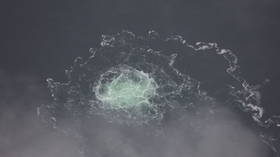NASA to set spacecraft on fire, for scientific purposes

NASA plans to deliberately set an orbiting unmanned vehicle on fire to observe and study how the blaze rages in space. Studying the exact behavior of big flames in space is vital for the prevention of actual accidents happening on board, scientists claim.
“NASA’s objective is to reduce the risk of long-duration exploration missions, and a spacecraft fire is one of the biggest concerns for NASA and the international space exploration community,” said Jason Crusan, NASA’s Advanced Exploration System director in the press release.
The first in a series of three experiments called Saffire (Spacecraft Fire Experiment) is to be held aboard NASA’s commercial partner Orbital ATK Cygnus capsule, which is set to take off from Cape Canaveral, Florida on March 22.
First the Cygnus capsule will supply the International Space Station with the necessary products, like food and water. Then, it will be loaded with flammable material, and undock from the station. Once the spacecraft moves away a significant distance from the station, the fire, triggered by ground control, will erupt on board. The whole procedure is expected to last some 20 minutes.
The first of the three Saffire experiments will monitor a large-scale microgravity fire. The Saffire-II will assess oxygen flammability limits, while the Saffire-III will determine the size and study the behavior of a second large-scale microgravity fire.
“Saffire will be the biggest man-made fire ever in space,” said Gary A. Ruff, NASA’s Spacecraft Fire Safety Demonstration project manager.
“Currently, we can only conduct small combustion experiments in the microgravity environment of the space station. Saffire will allow us to safely burn larger samples of material without added risk to the station or its crew.”
During the procedure scientists are to determine a number of parameters: The size of the flames, how fast they spread, the heat output and the amount of the emitted gas. Special sensors and cameras will record the data. The findings will help improve the ultra-light material used in the spacecraft and astronauts’ gear, scientists claim. The new information will also be useful for creating better fire detection and suppression systems for the space vehicles.
“Gaining a better understanding of how fire behaves in space will help further NASA’s efforts in developing better materials and technologies to reduce crew risk and increase space flight safety,” said Ruff.












